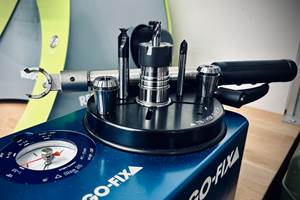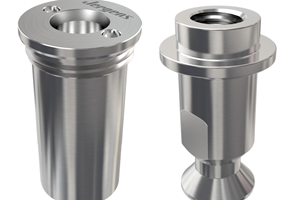Systematic Success
A more efficient manufacturing process has enabled this manufacturer to ramp up production of its devices for the oil and gas industry.
Share





On a drilling rig, pumps must circulate volumes of mud or slurry through the drill bit and down the well bore in order to control pressure and remove drill “cuttings.” These mud pumps typically consist of two subassemblies: the power end and the fluid end. The fluid end, traditionally contained in a one-piece body, produces the pumping process. Southwest Oilfield Products Inc. offers a two-piece, L-shaped assembly said to be less expensive and easier to maintain, offering more metal to support internal pressures.
Southwest Oilfield has been producing mud pump fluid ends for the oil and gas industry for more than 40 years and recently has ramped up production, according to Martin Johnson, manufacturing engineering manager. Although the design of its L-shaped assembly has remained relatively the same since its introduction in 1974, the company has improved its manufacturing process over the years to achieve greater efficiencies and produce a higher-quality finished product, he says.
On separate occasions, this improvement has come with support from a tooling vendor, KOMET. This company introduced its ABS quick tool replacement system to Southwest Oilfield in the early 2000s. More recently, it helped the company increase monthly production of fluid ends from 180 to 300 by outfitting Southwest’s two newest machining centers with updated tooling technology that allows for faster drilling and milling without compromising precision.
Southwest Oilfield produces a variety of products for the oil and gas industry in addition to the pump fluid ends, but the L-shaped device has played an important role in the company’s growth, largely because of its maintenance advantages. “Most fluid ends are a single unit,” Mr. Johnson explains. “Our system will let the operator replace just the suction or discharge module in the event of a failure. Changing valves or seats on a two-piece system is safer, faster and easier than replacing an entire single unit.”
In the past, the fluid ends were machined on large milling and boring machines fitted with spade drills and single-point drilling tools. The processing time was long, thanks to the numerous tool changes and resulting tool setting that was required. Komet’s ABS modular tooling system provides rigid mechanical clamping and a quick-change feature that allows operators to replace tools more efficiently. According to Mr. Johnson, after this tooling system was installed on a turret lathe that was rebuilt as a drilling and boring machine, the time savings from quicker tool replacements increased monthly production of the fluid ends so much that the company decided to incorporate the system into the manufacturing of other products, including wear plates, valve plugs, pistons and piston rods.
Other improvements to Southwest Oilfield’s manufacturing processes related to the types of machines it was using. By 2014, the company was employing more horizontal machining centers for fluid end production. That year, it installed two new HMCs from Nomura that were capable of not only roughing the parts, but also performing boring and precise finish milling operations in the same cycle. This improved both the production rate and the surface quality of the blocks, says Beniel Geevarghese, industrial engineer. He specifically points to the machines’ nose-type spindle heads, which he says offer better accessibility to the blocks by reducing the extended amount of the spindle. This also provides rigidity during heavy-duty cutting. These machines also employ a high-output motor for the rotational drive on the spindle, so high torque is obtainable during solid drilling over extended depths, he adds.
The engineers at Southwest Oilfield also saw opportunities to make further improvements once the machines were in operation. “We equipped one Nomura machine with a contouring head to perform complex machining operations in a single tooling setup,” Mr. Geevarghese says. “We retrofitted the other with a rigid rotary table interfaced to the machine’s control system. This increased the machine functionality and improved holding accuracy for the fluid end. Also, the control memory on both machines was expanded to handle a large volume of programs for the variety of fluid ends that are produced at the shop.”
Before installation of the Nomura HMCs, it was common for the operations these machines now perform to be completed across multiple machine tools, Mr. Geevarghese says. Fluid ends would move from workstation to workstation, and several engineers would be involved in the process. This increased the chances for error and created greater safety concerns on the production floor. “By installing the new machining centers, we’ve not only saved time and energy costs, but also reduced potential safety hazards by limiting the number of times a 5,000-pound block of steel has to move around the shop,” he says.
The Komet tooling is part of this improved process as well. The company’s KUB V464 drill system, for example, consists of a large drill head with an ABS connection and a program of extensions and holders. This enables the same head to be used to drill holes from 4 to 24 inches of depth, thus minimizing the number of tools required, and resulting in reduced tooling costs and simplified inventory management, Mr. Geevarghese says.
The new machine tools also provide shorter cycle times, a crucial step toward enabling the company to ramp up production from 180 to 300 fluid ends per month. The older mills took as much as 50 percent more time to perform the same machining task as the Nomura machines. They have given Southwest Oilfield the flexibility to utilize the same tools for several blocks, and delivery time has significantly decreased as a result, Mr. Geevarghese says. “Five years ago, this product (the fluid end) was available to our customers in about 16 weeks. In 2015, we’re able to do it in 12.”
Further challenges lie ahead for the company, however, as it fights to make sure other areas of its manufacturing process keep pace with this new productivity. Mr. Geevarghese says it will be important to optimize the company’s forging inventory and balance the production schedule so that the increased production of fluid ends does not create bottlenecks in other areas, like assembly.
Related Content
How to Troubleshoot Issues With Tool Life
Diagnosing when a tool is failing is important because it sets an expectation and a benchmark for improvements. Finding out why gives us a clue for how to fix it.
Read MoreMaking the Most of Mixed Toolholder Assemblies
While nearly all ER systems will have cross compatibility, they’ll have small differences across manufacturers that make their implementation at the shop level not as standard.
Read MoreJergens Pull Studs Enable Quick Changeovers
SP140 and K02 pull studs offer quick-change solutions for vise or gripper jaws, electronic component manufacturing, packaging machines, medical technology and automation.
Read MoreLyndex-Nikken Toolholders Offer Stable, Versatile Machining
Polygonal shank toolholders provide a rigid connection between the tool and machine — ideal for all processes both in turning and milling.
Read MoreRead Next
Registration Now Open for the Precision Machining Technology Show (PMTS) 2025
The precision machining industry’s premier event returns to Cleveland, OH, April 1-3.
Read More5 Rules of Thumb for Buying CNC Machine Tools
Use these tips to carefully plan your machine tool purchases and to avoid regretting your decision later.
Read MoreSetting Up the Building Blocks for a Digital Factory
Woodward Inc. spent over a year developing an API to connect machines to its digital factory. Caron Engineering’s MiConnect has cut most of this process while also granting the shop greater access to machine information.
Read More
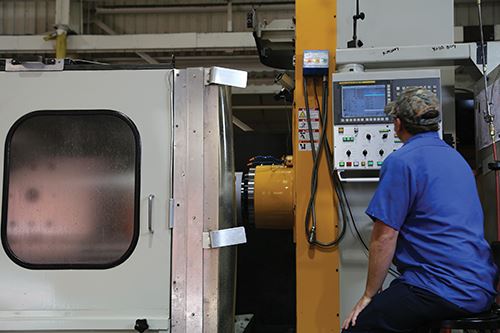
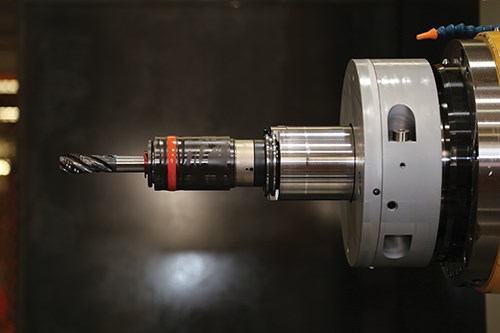
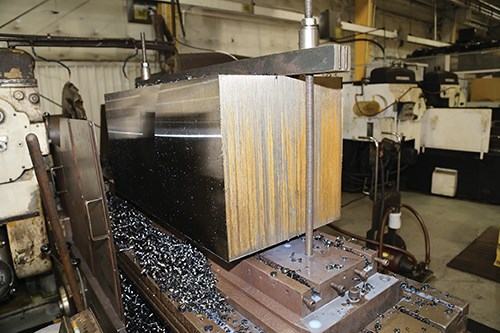
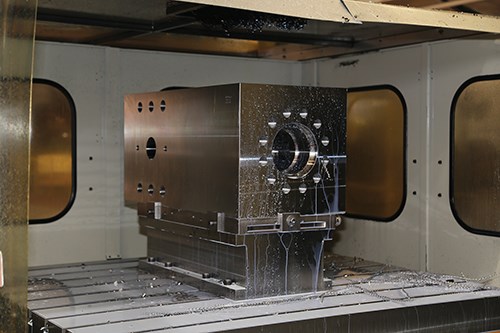
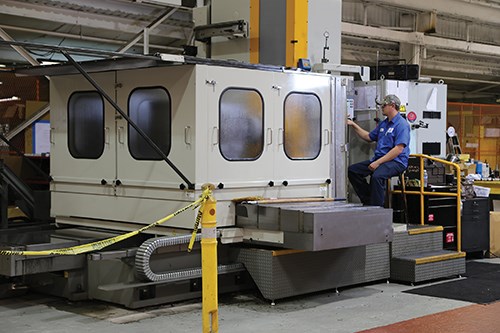
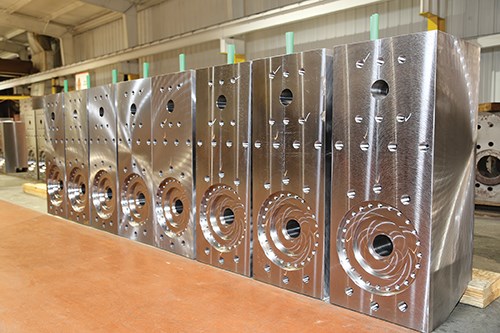




















.jpg;maxWidth=300;quality=90)


